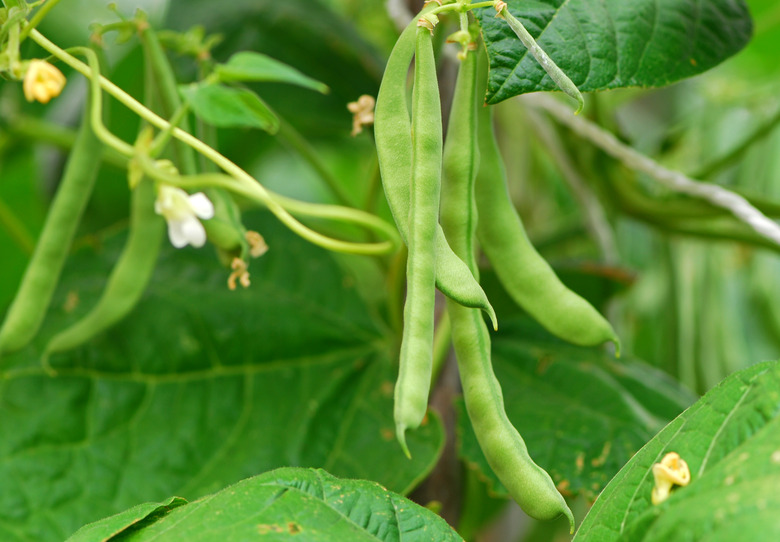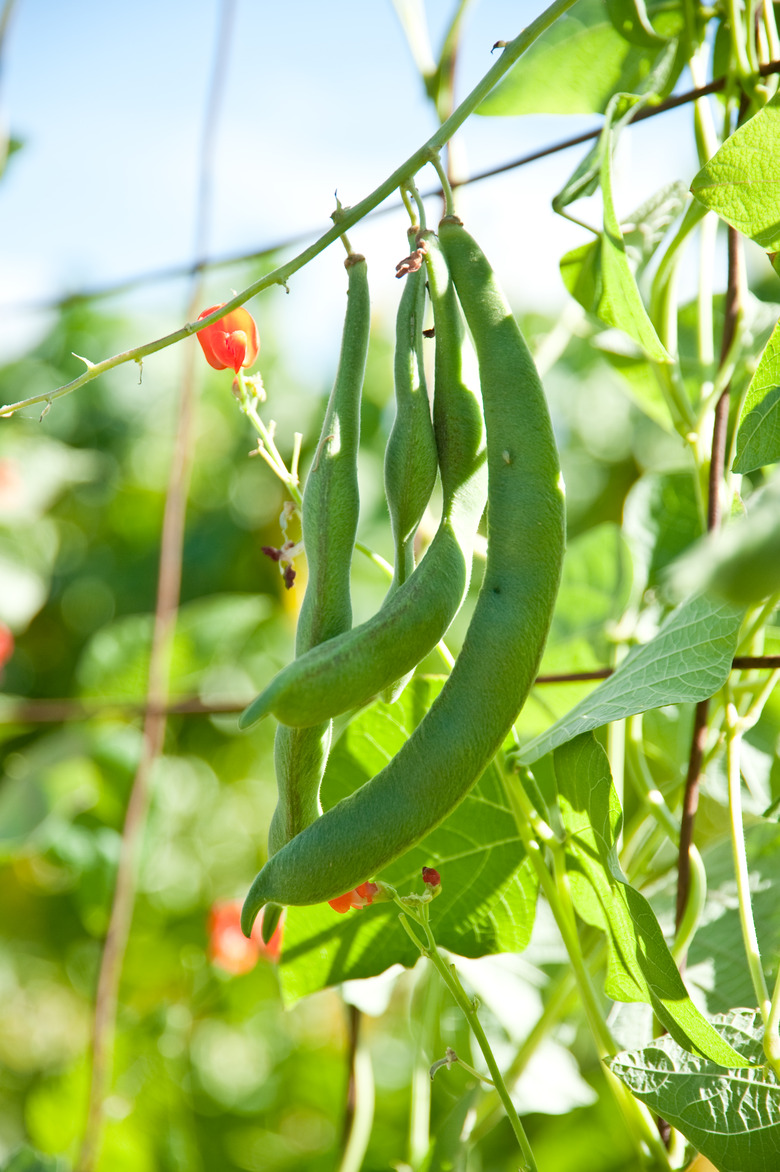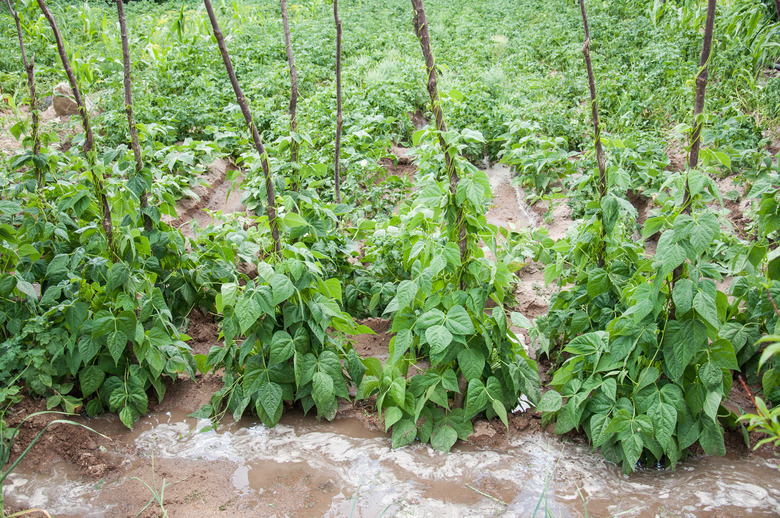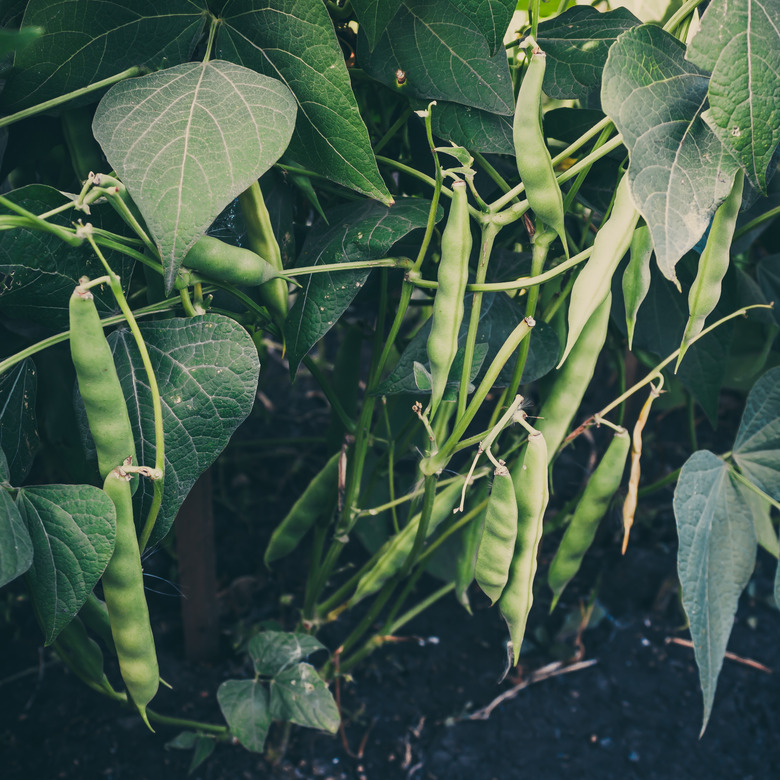How To Grow Green Beans
We may receive a commission on purchases made from links.
- Best uses for green beans
- How to grow green beans
- In what zone do green beans grow best?
- When should you plant green beans?
- Soil, sunlight and water recommendations for green beans
- How to winterize green beans
- How to harvest green beans
- Common pests and other problems for green beans
- Common diseases for green beans
Whether you call them green beans (Phaseolus vulgaris) or string beans, these plants are a vegetable garden favorite, and it's easy to see why. They're easy to grow, produce bountiful harvests and freeze well so you can enjoy the fruits of your gardening labor even during the winter. You will have to keep a watchful eye out for insect pests that like green beans as much as you do, but most of the pests you find on green beans are easily removed with a blast of water from the garden hose.
Anyone can grow green beans regardless of how green their thumb is or isn't. They also make an excellent crop for blossoming young gardeners. The seeds are big and are easy for little fingers to sow. Since they grow so quickly and produce so many beans, young gardeners will see results that will keep them interested.
Best Uses for Green Beans
Best Uses for Green Beans
Like all vegetables, gardeners grow green beans primarily to provide a nutritious, homegrown food option. Green beans offer a bit more, however. Because climbing/vining types need a sturdy trellis for support, green beans grow up rather than out. This makes them perfect for small gardens, and they add visual vertical interest to the garden.
You can grow your pole beans on a trellis, plant them in containers or shape them into little pyramids with teepee supports. You can also trellis pole beans onto an archway or a series of them to make a pretty cool fort in which you — or, of course, your kids — can play. If you give green beans a strong support, they'll grab hold quickly and climb wherever you wish.
How to Grow Green Beans
How to Grow Green Beans
- Common Name: Green bean, string bean
- Botanical Name: Phaseolus vulgaris
- When to Plant: Plant after the last frost when soil temperatures are 70 degrees Fahrenheit at night
- USDA Zones: As an annual in zones 3-10
- Sun Exposure: Full sun
- Soil Type: Moist, well-draining soil
- When it's in Trouble: Leaves wilt or turn brown, general loss of vigor
- When it's Thriving: Strong, leafy bushes or vines depending on the type of green bean
Starting Green Beans From Seed
Before you sow your green bean seeds, properly position your trellis or teepee support if you're growing a vining/pole type. Whichever support you choose, make sure the support structure is at least 7 feet tall and sturdy. It's also a good idea to make sure your trellis won't shade other plants in the garden. You'll then sow your seeds about 1 inch deep into the soil.
If you're using a trellis, space seeds 3 inches apart. When they sprout, go back and thin them to one plant every 6 inches. If you're using a teepee support, plant six to eight seeds around the support base. You can also sow bean seeds in containers as long as they're at least 15 inches around. If you start your beans in a container, remember that you're committed. Beans don't transplant well, and those planted in a container will spend their lives there.
In What Zone Do Green Beans Grow Best?
In What Zone Do Green Beans Grow Best?
Like most vegetable plants, green beans are annuals that you can grow during the summer. Gardeners anywhere in USDA plant hardiness zones 3 through 10 can successfully grow green beans as an annual crop. They're ready for harvest in about 55 to 60 days depending on the cultivar you plant. When fall comes, the bean plants will die, making room for next year's vegetable plantings.
When Should You Plant Green Beans?
When Should You Plant Green Beans?
Green beans are warm-season vegetables, so you cannot plant them before spring. You can get your green beans started as soon as the danger of frost has passed, however. Ideally, the soil in which you sow your green beans should stay at 70 degrees Fahrenheit or above all night long.
It's hard to wait when you have spring garden plans swirling through your mind, but resist the temptation to start your green bean seeds early in a seed tray. Because of their shallow roots, green beans almost always die when transplanted. Plan your garden carefully since your green bean plant will become a permanent resident of wherever you plant it.
Soil, Sunlight and Water Recommendations for Green Beans
Soil, Sunlight and Water Recommendations for Green Beans
Green beans prefer eight hours of sun a day, so choose a sunny, shade-free spot for them. Your beans will tolerate a bit of shade if they must, but expect to get fewer beans per plant where shade is a factor. Green beans are also pretty forgiving about their soil conditions. They prefer loamy, well-draining soil, but they'll accept heavier soils if necessary.
If you have heavy clay soil, provide small amounts of water frequently rather than giving your beans a deep soaking. You can also mix some organic matter such as compost or loam into the soil to loosen it a bit. Green beans also benefit from fertilization but don't go crazy with the nitrogen. Bean plants are nitrogen fixers, which essentially means they can make their own nitrogen. If you give them more, it could prove to be too much, resulting in overly leafy plants that produce fewer beans. For best results, side-dress your beans with a 10-20-10 fertilizer after the plants bloom.
When your green bean plants are tall enough, mulch around them to a depth of 2 inches. This will help keep weeds down and protect the shallow roots of your green bean plant.
Water your green beans regularly, providing about 2 inches of water a week, especially during the growing season. Aim the water at the base of your plant rather than the leaves and water when it's sunny. This allows any water that does hit the leaves to dry quickly, avoiding mildews and rots that grow on wet leaves.
How to Winterize Green Beans
How to Winterize Green Beans
As an annual vegetable plant, your green beans will enjoy a single growing season and then die over the winter. There's no way to revive them or save them for next year. You can, however, grow a winter crop of green beans indoors if you like.
To do so, sow your green bean seeds in a 15-inch or larger pot. Stand a trellis in the pot or secure it next to your container. Place the container in a warm, bright area of your home where it will receive plenty of direct sunlight. If need be, you can supplement poor indoor lighting with artificial grow lamps.
When the beans are ready, pluck them from the plant and enjoy them as you normally would. Keep in mind that once your plant's harvest period is over, it will die back even indoors. If you want another round of indoor beans, remove the spent plant from your container and plant another.
How to Harvest Green Beans
How to Harvest Green Beans
Beans are ready for harvest in about 55 to 60 days, and harvest them you must. If you allow mature bean pods to stay on the plant, the beans will bulge and become tough. They may also signal to the plant that it's time to focus on seed production rather than flower production, greatly decreasing your yield.
Harvest your beans at least every other day, preferably picking in the morning when there is more sugar in the bean pods. Look for smooth pods that are 4 to 6 inches long. Pole beans can keep producing for six to eight weeks, so make a plan. You'll likely need to freeze, pickle, can or give away some of your beans since you may harvest way more veggies than you can eat in a season.
Common Pests and Other Problems for Green Beans
Common Pests and Other Problems for Green Beans
If you're not interested in sharing your green bean plants with rabbits or deer, you'll need to place a fence or chicken wire barrier around your garden bed. You may also find Mexican bean beetles, slugs, caterpillars and aphids munching on your green beans.
Mexican bean beetles look like brown ladybugs, while aphids are small green or brown soft-bellied insects. Caterpillars and slugs, of course, are easily recognized. Fortunately, all of these pests are easy to remove. You can pick them off by hand, which is best, or blast them with a jet of water from the garden hose. Wet leaves promote mildew, however, so use the hose at the peak of the day when your plants will dry quickly.
If you find a plant in your garden that is completely and irreparably infested with pests, pull it out of the garden and seal it in a plastic bag. Leave the bag sealed for one week to kill off all of the insects and then dispose of it or compost it.
Weeds can also be troublesome for green beans, but it's important to weed your garden diligently so that you can get rid of the weeds without hurting your green bean plants. If you get to your beans too late and discover that a large weed has taken hold, it may be best to leave it. Pulling a deeply rooted plant may disrupt the shallow roots on your green beans and do more harm than good.
Common Diseases for Green Beans
Common Diseases for Green Beans
Powdery mildew, rusts and mosaic viruses can all strike green bean plants. , and all are caused by fungi. You can avoid them by keeping the plant leaves dry and allowing plenty of air circulation around them. These diseases are more prevalent during cool, wet weather, so you may have no issues with your beans one summer but struggle with fungi the next.
If your plants have fungal issues, sulfur, neem oil and other fungicides can be used safely on green beans. If your bean plants become infected with a virus, you'll need to pull up and discard plants since there is no cure for viral diseases. Although not common, bacteria can also be an issue in green beans. You can usually prevent bacterial problems by rotating crops and growing resistant bean varieties.
Before treating any diseases, it's best to talk to your local cooperative extension service or garden center. They'll know how to identify and offer management recommendations for the specific diseases that are common in your area.



